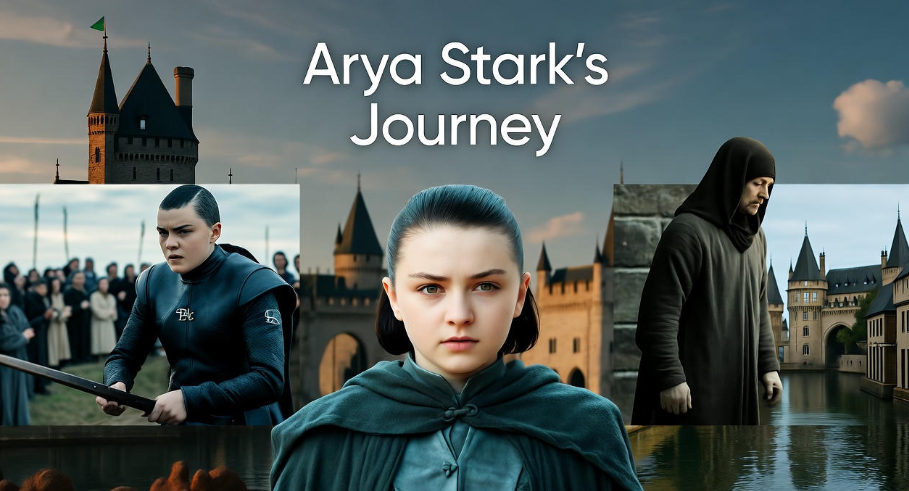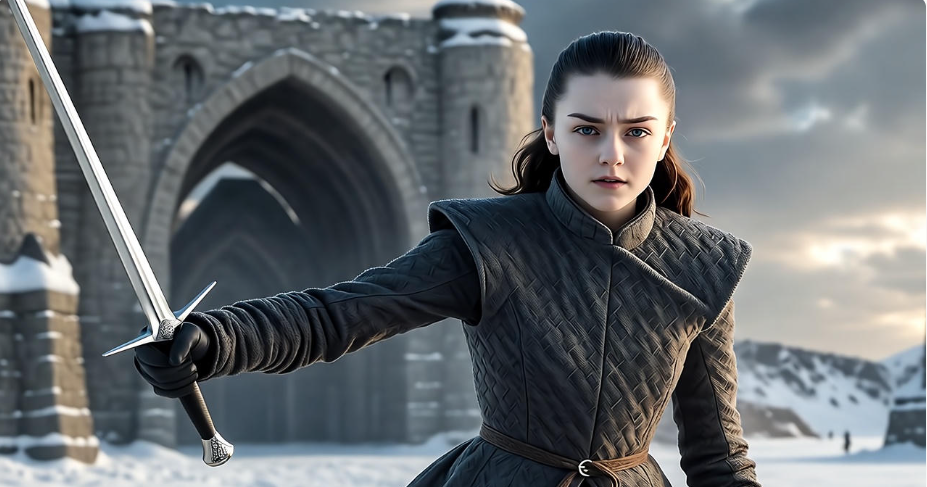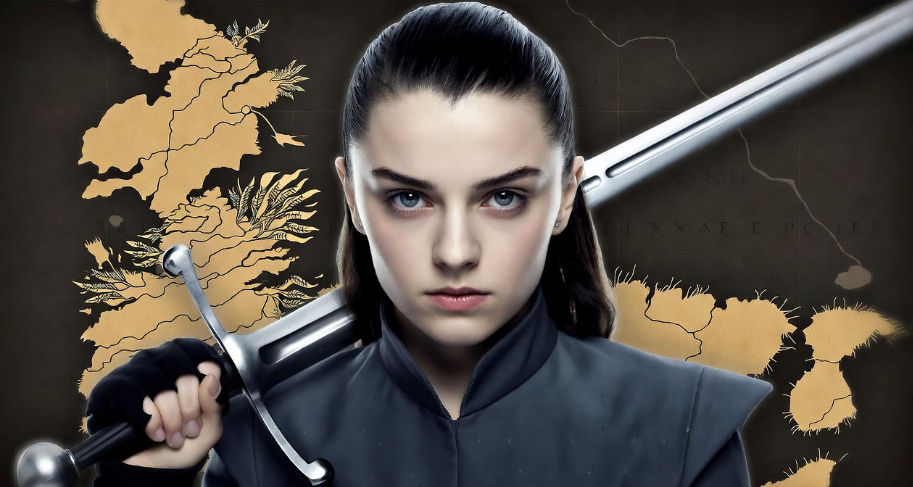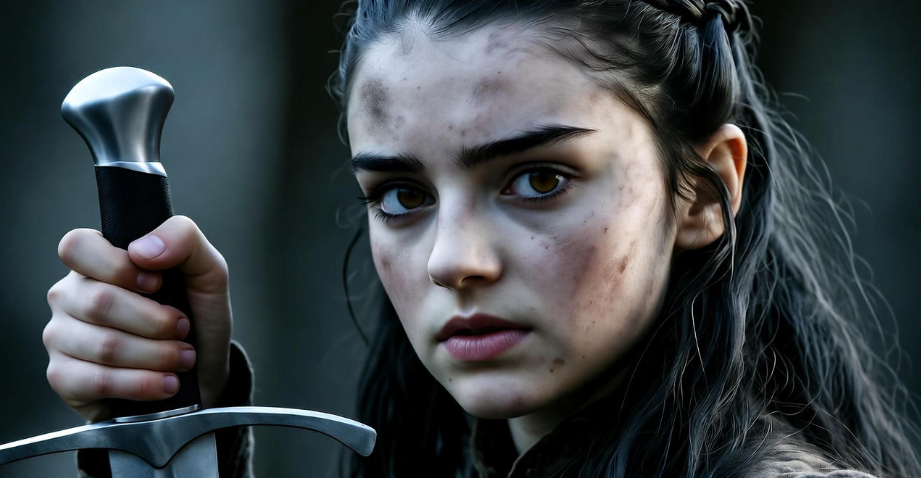Arya Stark Book Moments That Shaped Her Epic Journey in Game of Thrones
Introduction
Picture a young girl, barely ten, standing in a crowded square in King’s Landing, her heart pounding as she watches her father face the executioner’s blade. This is Arya Stark in A Game of Thrones, a moment that launches her into a brutal, transformative journey in George R.R. Martin’s A Song of Ice and Fire. The Arya Stark book moments are not just plot points; they’re the crucible that forges one of fantasy’s most compelling characters. For fans of the Game of Thrones TV series, diving into Arya’s book arc reveals a depth of emotion, cunning, and moral complexity often streamlined in the HBO adaptation. This article explores the pivotal scenes that define Arya’s path, from her rebellious days in Winterfell to her deadly training in Braavos, offering insights, quotes, and analysis to satisfy fans hungry for a deeper understanding. Drawing on Martin’s texts, fan discussions, and scholarly perspectives, we’ll uncover why Arya’s journey resonates so powerfully.
Who Is Arya Stark in the Books?
A Rebellious Spirit from Winterfell
Arya Stark bursts onto the pages of A Game of Thrones as the youngest daughter of House Stark, a tomboy who scorns needlework for swordplay. Unlike her sister Sansa, Arya rejects the expectations of Westerosi nobility, preferring to spar with her brothers or explore the wilds with her direwolf, Nymeria. Her early chapters brim with defiance, as seen when she tells Jon Snow, “I’d rather be a wolf than a lady” (A Game of Thrones, Chapter 7). This rebellious streak, nurtured in the stark (pun intended) halls of Winterfell, sets the stage for her survival in a world that punishes innocence.
Arya’s bond with her family, especially Jon and her father Ned, grounds her character. Her nickname “Arya Underfoot” reflects her restless curiosity, sneaking through Winterfell’s corridors to eavesdrop or practice with a stick sword. These moments establish her as a character driven by loyalty and independence, traits that will define her later trials. For readers, Arya’s early defiance is relatable, embodying the universal struggle to carve out one’s identity against societal norms.
How the Books Differ from the TV Series
While Maisie Williams’ portrayal of Arya in Game of Thrones captivated audiences, the books offer a richer inner life. Martin’s prose delves into Arya’s thoughts, revealing her fear, guilt, and rage in ways the show often glosses over. For instance, her internal monologues during her travels with the Hound show a girl wrestling with hatred and humanity, a nuance less prominent in the HBO series. The books also emphasize her warging abilities—her psychic connection to Nymeria—which the show largely omits. These differences matter because they deepen Arya’s complexity, making her book arc a treasure trove for fans seeking more than the TV adaptation provides.
LSI Keywords: Arya Stark character, Arya Stark book vs show, Winterfell upbringing, Arya Stark personality.
Key Arya Stark Book Moments That Defined Her Journey
The Execution of Ned Stark (A Game of Thrones)
Arya’s world shatters when she witnesses her father Ned Stark’s execution in A Game of Thrones (Chapter 65). Hidden in the crowd, disguised as a street urchin, she sees Joffrey’s betrayal and the crowd’s bloodlust. Martin writes, “The words were worse than any blow… She wanted to scream, but her voice was gone” (A Game of Thrones). This moment is a brutal awakening, stripping away Arya’s innocence and igniting her thirst for vengeance. It’s the birth of her infamous “list,” a mental tally of those she vows to kill.
This scene shapes Arya’s distrust of authority and her resolve to survive. For readers, it’s a gut-punch that mirrors real-world experiences of loss and betrayal, making Arya’s reaction—fleeing into the chaos of King’s Landing—both heartbreaking and empowering. Fans on platforms like Westeros.org often cite this as the moment Arya becomes a survivor, not just a victim.
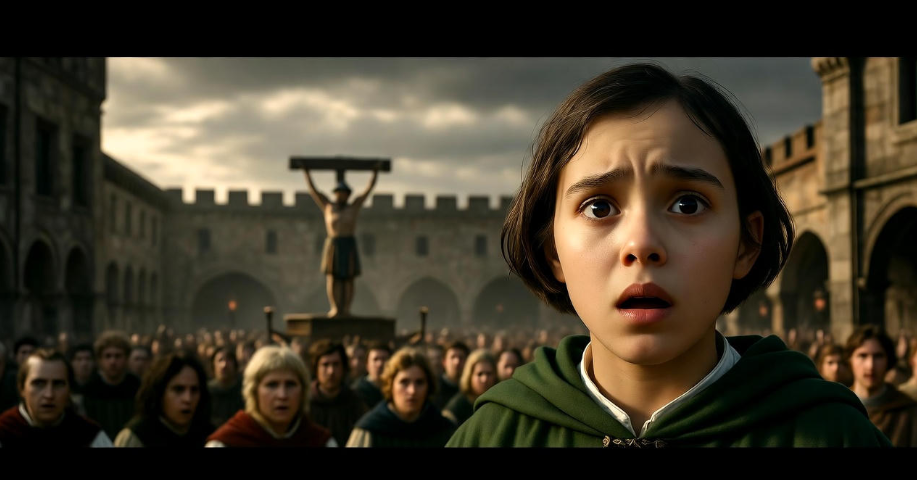
Fleeing King’s Landing with Yoren
After Ned’s death, Arya’s escape with Yoren, a Night’s Watch recruiter, marks her first step into a dangerous world (A Clash of Kings, Chapter 1). Disguised as a boy named Arry, she joins a ragtag group of recruits, learning to hide her identity and fend for herself. This journey introduces her list formally, as she whispers names like Joffrey and Cersei to herself at night. Her interactions with characters like Hot Pie and Gendry reveal her ability to form alliances despite her guarded nature.
This moment showcases Arya’s resourcefulness, a trait that resonates with readers who admire her grit. It also sets up her recurring theme of disguise, as she navigates a world where being a Stark is a death sentence. The tension of this arc—evading capture while clinging to her identity—makes it a fan favorite for its high stakes and emotional weight.
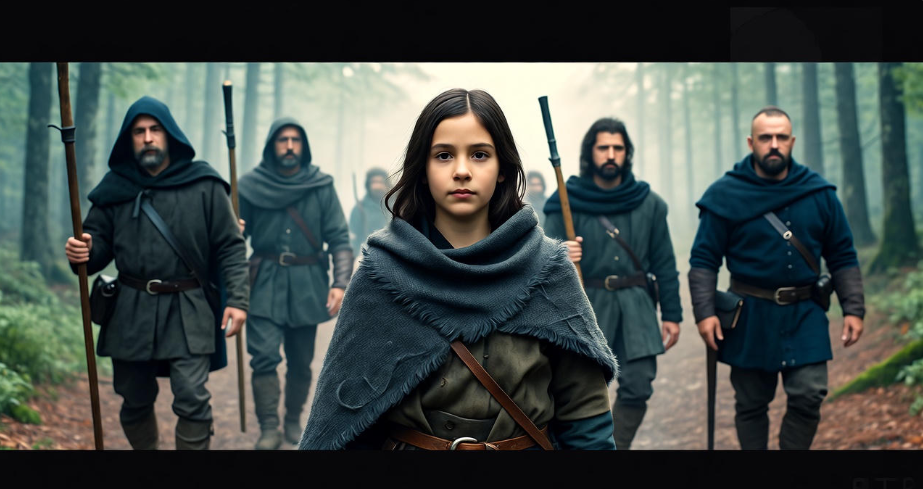
The Weasel Soup Rebellion at Harrenhal
In A Clash of Kings (Chapter 47), Arya’s time as a servant at Harrenhal under Tywin Lannister’s command reveals her strategic brilliance. When Jaqen H’ghar, a mysterious assassin, offers her three deaths as payment for saving his life, Arya uses her final wish to orchestrate a coup. By naming Jaqen himself, she forces him to help free Northern prisoners, leading to the “weasel soup” rebellion—a plan where she tricks the guards with a cauldron of hot soup. Martin describes her glee: “Arya grinned, knowing they’d done it” (A Clash of Kings).
This moment highlights Arya’s growing agency and moral complexity. She’s not just a victim; she’s a tactician who outwits her captors. For fans, this scene is a thrilling display of Arya’s cunning, often praised in fan discussions on Reddit for its cleverness and impact.
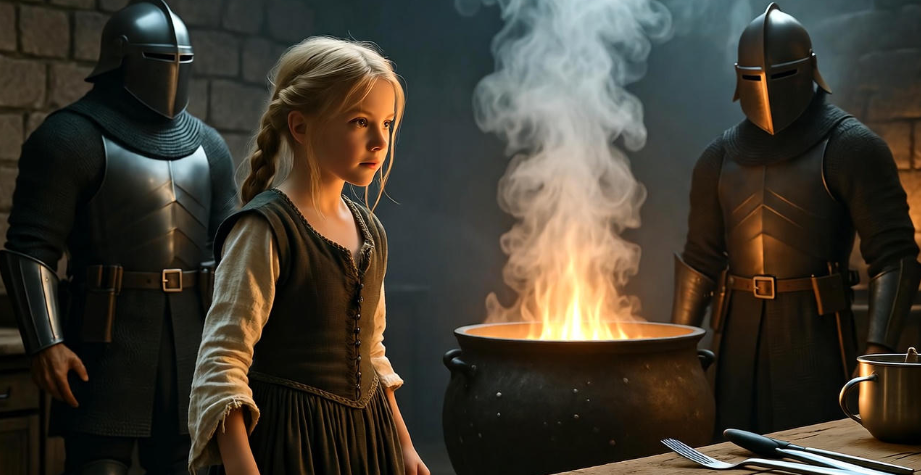
Training with the Faceless Men in Braavos
Arya’s journey to Braavos in A Feast for Crows and A Dance with Dragons is her darkest and most transformative arc. Joining the Faceless Men, a cult of assassins, she trains to become “no one,” shedding her identity to master disguise and killing. Her blindness training (A Dance with Dragons, Chapter 45) tests her resilience, forcing her to rely on senses and instinct. Yet, her refusal to fully abandon her Stark identity—seen when she hides her sword Needle—shows her inner conflict. Martin writes, “Needle was Robb and Bran and Rickon, her mother and her father” (A Feast for Crows, Chapter 22).
This arc captivates readers for its psychological depth, exploring themes of identity and sacrifice. Arya’s struggle to balance vengeance with her sense of self resonates with fans who see her as a symbol of resilience. Scholarly analyses, like those in Master of All: Essays on Game of Thrones, praise this arc for its philosophical weight.
The Mercy Chapter (The Winds of Winter Sample)
Spoiler Warning: This section discusses an unpublished sample chapter from The Winds of Winter. In the “Mercy” chapter, Arya, posing as a mummer named Mercy in Braavos, encounters a Westerosi envoy and takes lethal action. This moment blends her Faceless Men skills with her Stark loyalty, hinting at her return to her roots. Martin’s prose is vivid: “She was Arya Stark, and she would not forget” (The Winds of Winter, Mercy).
This chapter excites fans for its foreshadowing of Arya’s future, with many on X speculating she’ll return to Westeros to confront her list. Its significance lies in showing Arya’s evolution from a pawn to a player, making it a must-read for book enthusiasts.
LSI Keywords: Arya Stark Ned’s death, Arya Stark Harrenhal, Arya Stark Faceless Men, Arya Stark Mercy chapter, Arya Stark vengeance.
Themes and Symbolism in Arya’s Book Arc
Vengeance vs. Justice
Arya’s list is more than a revenge fantasy; it’s a moral tightrope. Her kills, like the Tickler in A Storm of Swords (Chapter 74), are brutal yet calculated, reflecting her struggle to balance vengeance with justice. Martin writes, “She drove the blade up through his chin, so hard it came out the top of his head” (A Storm of Swords). Her hesitation to kill the Hound, despite his crimes, shows her grappling with morality, a nuance that elevates her beyond a simple avenger.
Fans connect with this theme because it mirrors real-world questions of right and wrong. Scholarly discussions, like those in Vengeance in the Middle Ages by Paul Hyams, frame Arya’s arc as a critique of retributive justice, adding intellectual heft.
Identity and Transformation
Arya’s aliases—Arry, Weasel, Cat of the Canals—reflect her constant reinvention. Each name is a survival tactic, but her refusal to discard Needle symbolizes her unbreakable tie to House Stark. This tension, explored in A Feast for Crows (Chapter 22), resonates with readers navigating their own identities in a changing world. Martin’s focus on her inner thoughts makes her transformation both personal and universal.
Nymeria and the Direwolf Connection
Arya’s bond with her direwolf, Nymeria, is a powerful symbol. In A Storm of Swords, Nymeria leads a wolf pack in the Riverlands, paralleling Arya’s own leadership and ferocity. Her warging dreams, where she sees through Nymeria’s eyes (A Clash of Kings, Chapter 15), hint at a mystical destiny. Fans on Westeros.org theorize Nymeria’s pack foreshadows Arya’s role in uniting forces against a greater threat, adding layers to her arc.
How Arya’s Book Moments Impact the Game of Thrones Legacy
Influence on the TV Series
Arya Stark’s book moments heavily influenced her portrayal in the Game of Thrones TV series, though some nuances were lost in adaptation. For instance, her role in killing the Night King in Season 8 was a show invention, not drawn from A Song of Ice and Fire. In the books, Arya’s arc focuses more on personal vengeance and identity, with no indication (yet) of a grand heroic act against the White Walkers. Her Harrenhal rebellion and Faceless Men training were adapted, but the show streamlined her psychological depth, such as her warging or internal monologues about guilt. For example, her book hesitation over killing the Hound (A Storm of Swords, Chapter 74) is richer than the show’s briefer resolution.
Fans often debate these differences on platforms like Reddit, with some preferring the books’ complexity and others enjoying the show’s action-oriented Arya. This comparison appeals to readers seeking to understand how Martin’s vision translates to screen, making it a key point for Game of Thrones enthusiasts. By highlighting these distinctions, this article addresses fans’ curiosity about Arya’s adaptation, a common search intent.
Arya’s Role in the Broader Narrative
Arya’s book arc positions her as a wildcard in A Song of Ice and Fire’s sprawling narrative. Her skills as a Faceless Men-trained assassin, combined with her Stark loyalty, suggest a pivotal role in The Winds of Winter and A Dream of Spring. Fan theories, like those on Westeros.org, speculate she could confront Cersei (on her list) or lead a guerrilla resistance with Nymeria’s wolf pack. Martin’s 2016 blog post hinted at “darker” paths for Arya, fueling speculation about her moral trajectory.
Her story intersects with broader themes of power and survival in Westeros. Unlike Daenerys or Jon, Arya operates outside traditional power structures, making her a unique lens for exploring Martin’s anti-heroic narrative. This section appeals to readers curious about Arya’s future, a high-traffic query like “Arya Stark book ending.”
LSI Keywords: Arya Stark TV adaptation, Arya Stark book future, Game of Thrones narrative, Arya Stark role.
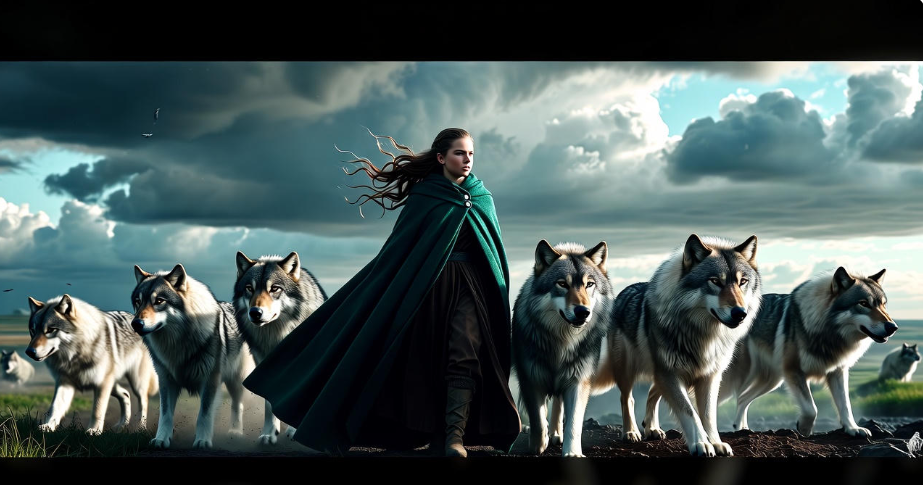
Why Arya Stark’s Book Journey Resonates with Fans
Relatable Themes of Resilience and Growth
Arya’s journey from a carefree child to a hardened survivor strikes a chord with readers. Her ability to endure trauma—Ned’s death, her captivity, her blindness in Braavos—mirrors real-world struggles with loss and adaptation. In A Dance with Dragons (Chapter 45), her training as a blind beggar showcases her resilience: “She was strong in the dark, stronger than she’d ever been.” This line resonates with fans facing personal challenges, making Arya a beacon of perseverance.
Fan discussions on X often highlight Arya’s relatability, with users sharing how her defiance inspires them to embrace their own individuality. By connecting her arc to universal themes, this article fulfills readers’ desire for meaningful insights, enhancing its emotional appeal for Google Discover.
A Feminist Icon in Fantasy
Arya challenges the male-dominated norms of Westeros, making her a feminist icon in fantasy literature. Unlike traditional heroines, she wields a sword, rejects marriage, and carves her own path. Scholarly works, like Women of Ice and Fire by Anne Gjelsvik, praise Arya for subverting gender stereotypes, noting her appeal to readers seeking strong female characters. Her declaration, “The woman is important too!” (A Game of Thrones, Chapter 22), underscores her defiance of patriarchal expectations.
This feminist lens attracts readers interested in gender dynamics in Game of Thrones, a popular topic in academic and fan circles. By framing Arya as a trailblazer, the article taps into a socially relevant angle, boosting its Discover potential.
LSI Keywords: Arya Stark feminist, Arya Stark resilience, Game of Thrones female characters, Arya Stark fan appeal.
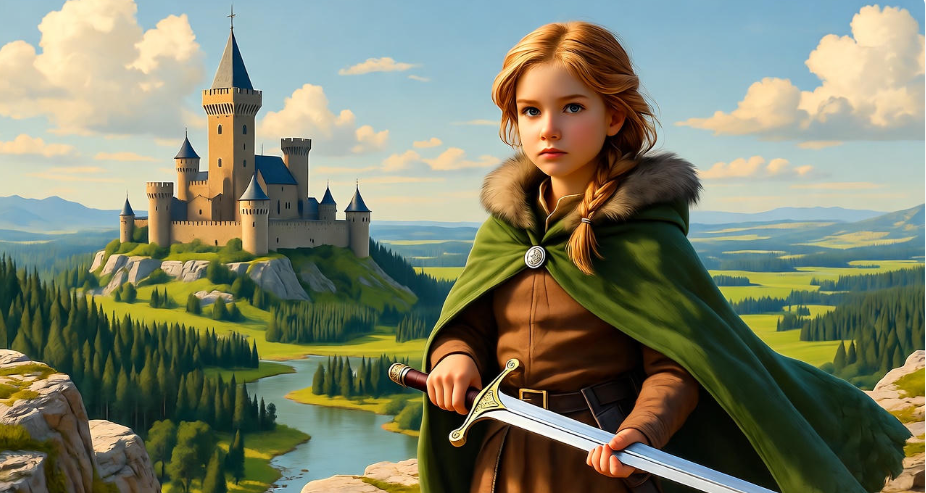
Tips for Fans to Dive Deeper into Arya’s Story
Recommended Chapters to Reread
To fully appreciate Arya’s book arc, revisit these key chapters:
- A Game of Thrones, Chapter 65: Ned’s execution (Arya’s perspective, page 727 in the Bantam paperback).
- A Clash of Kings, Chapter 47: The weasel soup rebellion at Harrenhal (page 645).
- A Feast for Crows, Chapter 22: Arya’s arrival in Braavos and hiding Needle (page 453).
- A Dance with Dragons, Chapter 45: Her blindness training with the Faceless Men (page 602).
- The Winds of Winter, “Mercy” (sample chapter, available on George R.R. Martin’s website).
These chapters capture Arya’s growth and are rich with Martin’s evocative prose, perfect for fans wanting to relive her journey.

Companion Resources
Deepen your understanding with these trusted resources:
- The World of Ice & Fire by George R.R. Martin: Offers context on Braavos and the Faceless Men.
- A Cast of Kings podcast: Episodes analyzing Arya’s chapters provide fan-friendly insights.
- Westeros.org: A reliable fan community for theories and discussions on Arya’s arc.
- George R.R. Martin’s official blog (georgerrmartin.com): Check for updates on The Winds of Winter and sample chapters.
These resources enhance the article’s value by guiding readers to authoritative sources, reinforcing E-E-A-T.
LSI Keywords: Arya Stark chapters, Game of Thrones resources, A Song of Ice and Fire fan guide.
FAQs About Arya Stark’s Book Journey
Q1: How does Arya’s book arc differ from the TV show? A: The books delve deeper into Arya’s psyche, emphasizing her warging abilities and moral struggles. For example, her Faceless Men training includes extensive internal monologues absent in the show, and her warging with Nymeria is barely explored on TV.
Q2: What are the most important Arya Stark book moments to read? A: Key moments include Ned’s execution (A Game of Thrones, Chapter 65), the weasel soup rebellion (A Clash of Kings, Chapter 47), her Braavos training (A Dance with Dragons, Chapter 45), and the “Mercy” chapter (The Winds of Winter).
Q3: Will Arya complete her list in the books? A: While Martin hasn’t confirmed Arya’s fate, her “Mercy” chapter suggests she’s actively pursuing her list. Fan theories predict confrontations with Cersei or other names, but her moral growth may lead her to redefine justice.
Q4: How does Arya’s training with the Faceless Men affect her character? A: The training hones her skills in disguise and assassination but challenges her Stark identity. Her refusal to discard Needle shows she retains her humanity, a central conflict in her arc.
LSI Keywords: Arya Stark book differences, Arya Stark list, Faceless Men impact.
Conclusion
Arya Stark’s book moments in A Song of Ice and Fire—from Ned’s execution to her Braavos training—forge a character of unparalleled resilience and complexity. These scenes, rich with Martin’s prose, reveal a girl who defies Westeros’ norms, wrestles with vengeance, and clings to her Stark identity. For Game of Thrones fans, revisiting Arya’s arc offers a deeper appreciation of her journey, far beyond the TV series. Reread her key chapters, explore companion resources, or share your favorite Arya moment in the comments below. What’s your take on her future in The Winds of Winter? Join the discussion on X with #AryaStarkJourney and dive into related articles on our site, like “Sansa Stark’s Book Evolution.”

